Caitlin Connolly
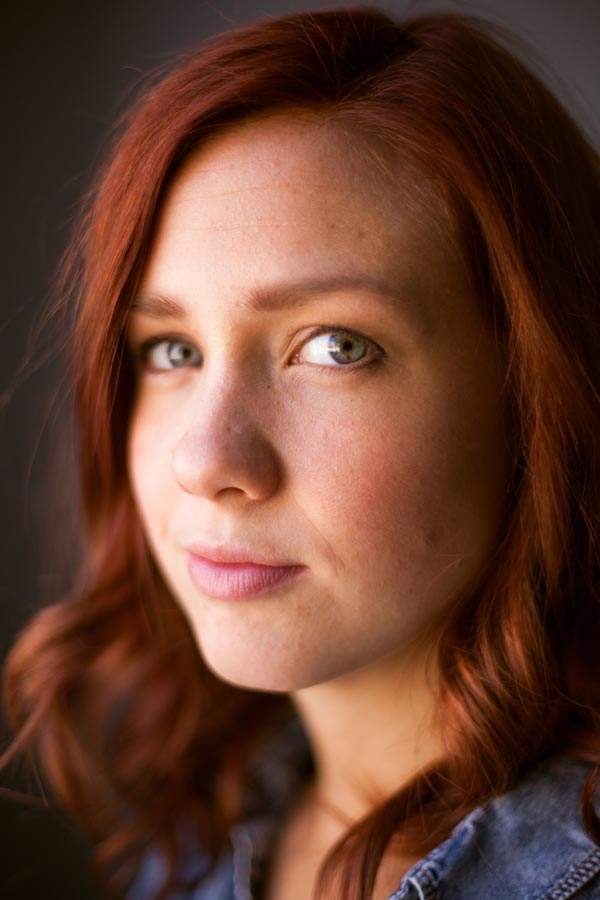
Tell us a bit about yourself—where you’re from, where you went to school, etc.
I grew up in Salt Lake City, the only girl with three brothers, to my flute-teacher mother and my entrepreneur father. I began coloring the walls with crayons when I was young, but took a passionate liking to art in my twenties when I realized art wasn’t just about drawing, it was about saying something. I graduated from the University of Utah in 2009 with a BFA emphasizing in Painting and Drawing and I have been passionately pursuing my creative path since that time. I married my handsome, guitar-playing high school sweetheart in 2006 and we now live in Utah County with our little dog, Albus. I am happiest spending time in my studio, touring on the road with my husband, songwriting, or watching a good TV show.
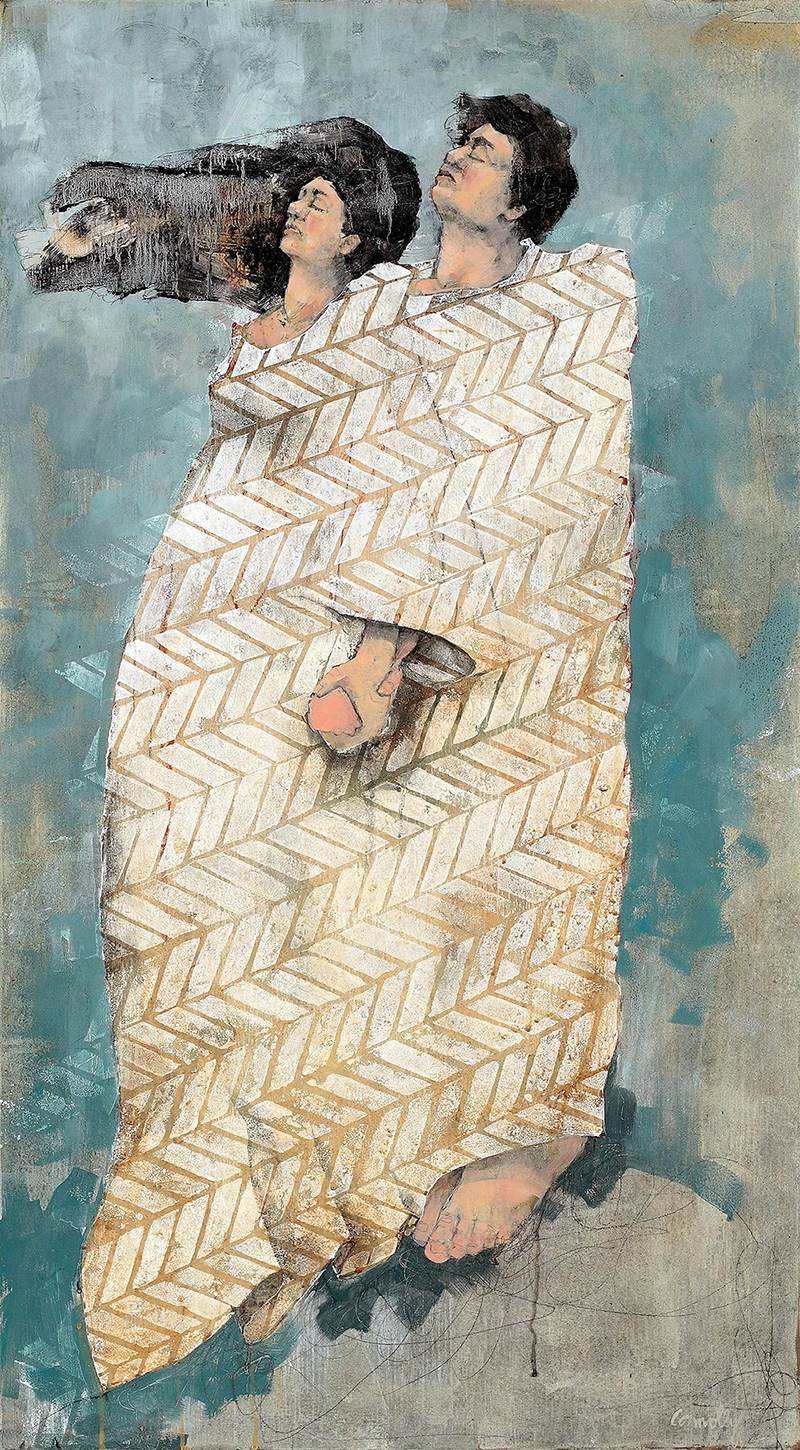
How do you feel about the BFA program at the U? How did it, or the instructors, influence your work?
I had a great experience at the U of U. I’m always of the opinion that the program only gives you as much as you put into it. I worked really hard, learned from the faculty, and had a fantastic experience. The professors I clung to the most were Tom Hoffman, John O’Connell, and Alison Denyer.
Hoffman was incredibly good to me my first year. He took time to meet with me, sent me home with books from his personal collection, and truly believed in me. He helped me refine my foundational skills and understand values, process, and color theory.
O’Connell was the first professor to encourage me to work abstractly, which wasn’t a natural intuition for me. He taught me paintings need to say something, even if it is just shapes and colors.
Denyer’s instruction shaped the way I understand the figure. She taught me to move beyond perfectly rendered proportions to discover something more beautiful and fluid about the figure. She also taught me how to prepare ground surfaces of canvases and encouraged thoughtfulness in subtle textures and small details.

That sounds like a excellent experience. As you developed as an artist, did you also feel your own voice evolving? Are you able to express yourself more clearly as a result?
I don’t think I had a strong voice as a student. The professors definitely helped equip me with technical tools that I could use to express myself, which was great, but at that time I didn’t know what to say. I see a lot of technically proficient artists who I admire, but I began to realize the artists I had a strong admiration for were a smaller, more rare group—those who had a profound vocal message to share that was combined with interesting technical elements. I began to strive to be that kind of artist, but the pathway wasn’t easy for me. I can think of a few things that have helped me find my voice—I’ll share two examples.
The first that stands out in my mind was when I started a blog. I began blogging a couple of years ago when blogging was that cool new toy that all the kids wanted to play with. My husband and I had a busy schedule crammed with our different musical and artistic pursuits and I realized blogging was a fantastic new opportunity for me to document our pursuits and share them with a larger audience. Not only was blogging fantastic because it forced me to continue to create because I had readers that held me accountable to do so, but I began to write, a lot. I wrote in a style that entertained me and I wrote honestly about topics that felt brave to me. Although I thought I was just blogging for the fun of it, I look back and realize this was a season in my life where my voice began to develop.
One other important season of my life is the twelve weeks I spent reading and participating in The Artist’s Way: A Spiritual Pathway to Higher Creativity, by Julia Cameron. As a part of this popular creative self-help book I was required to write morning pages. I wrote three full pages of stream-of-conscious nonsense almost every day for a few months. I also completed other writing tasks, artists dates, and shared my experiences with a book group of artists who I love and admire. The outcome of working on this project helped my voice develop even more and I am grateful for that experience.

How has your style developed?
My style has developed a lot over the past year, largely in the sense that I suppose I found one (wink wink). Coming across a more coherent “style” was a recent occurrence for me and it was a perfect storm of multiple elements. On a personal level, there were numerous self-discoveries I made while spending countless hours in my studio working through piles of blank canvases. I began consuming books that talked about the creative process which helped me extinguish fears and anxieties, trust my genuine creativity, and work through creative blocks. Simultaneously, as an answer to my prayers, I was able to meet other working artists who generously and wonderfully invited me into their home and shared tips, ideas, and information with me.
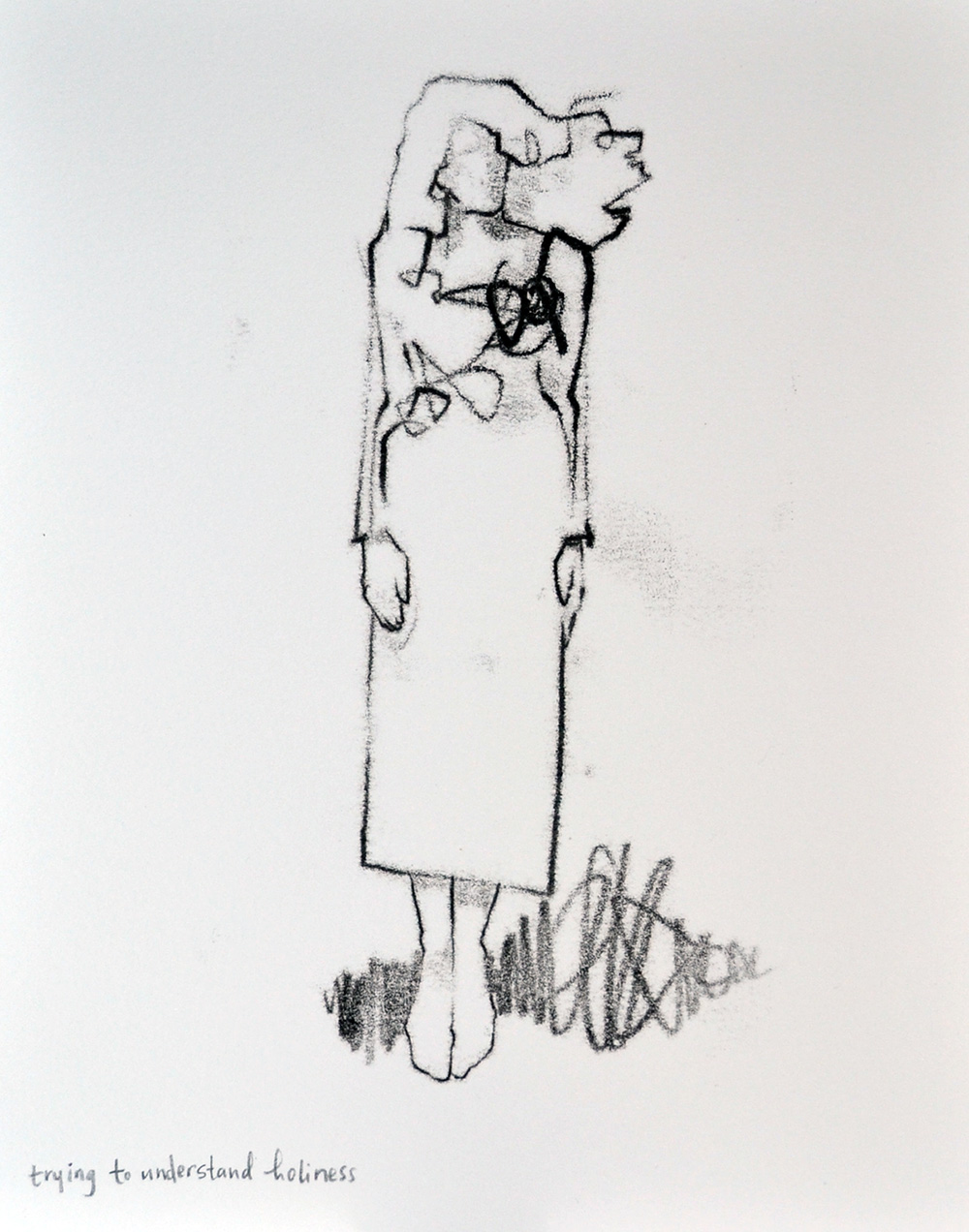
I am thrilled I have found ways to use mediums in a way that brings my ideas to life. My style has become more obvious to me the more I turn to my sketchbook and put in lots of hours, and I know it will continue to evolve as I keep asking questions and continue to work hard. I look forward to that.
What artists have you worked with? How have they influenced your work?
I have met a number of local artists who have been very generous to me. They all shared some small, simple, meaningful idea with me that helped my work grow. To name a few:
Cassandra Barney taught me about the walnut mediums she uses, which was a blessing, because I had been struggling with headaches from more toxic thinners.
Andrew Ballsteadt taught me about oil transfers, which was wonderful because I realized a while ago I like to draw far more than I like to paint, and oil transfers give the illusion of a drawing but in a painterly medium.
Kirk Richards taught me about painting on wood and building textures, which gave me more ideas about how to build depth on my canvas.
Brian Kershisnik taught me about drawing on paper using oil mediums and invited me to join a weekly drawing group he participates in where I have been able to meet with other like-minded artists on a regular basis and feel a sense of belonging.
I consider all of these names (and more left unmentioned) to be dear friends and mentors. They continue to respond to my many messages and calls with helpful information and patience.
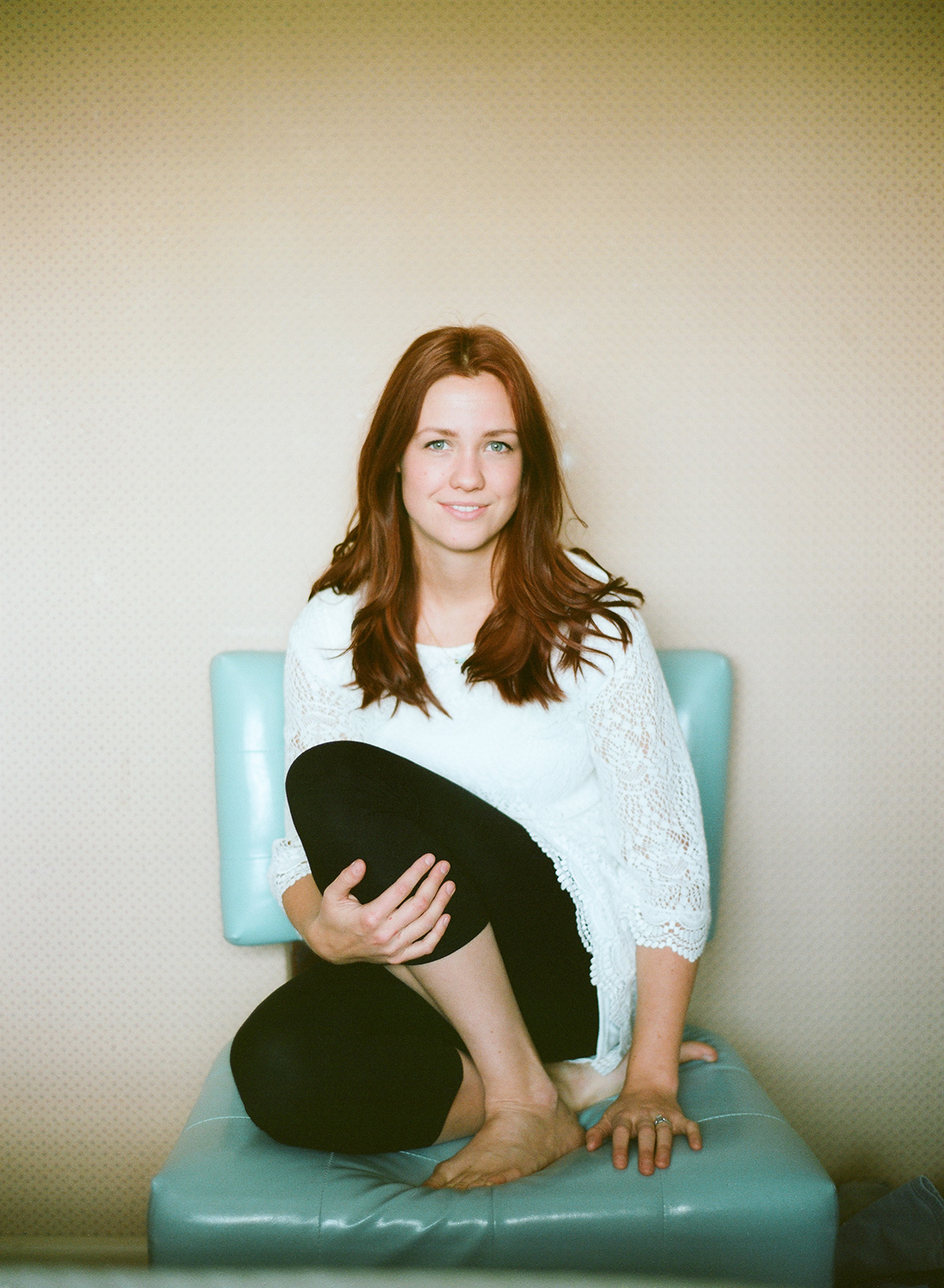
Tell us more about being a Mormon artist. Do you feel that title fits you? How does your faith influence your work? How does your work influence your faith? Also, do you feel your work is a tool in sharing your faith and, if so, how?
I think one reason I love creating so much is the act of it continually challenges my faith. As I draw and paint, I ask questions, and somehow, I find answers. My sketchbooks are somewhat of a sacred place for me. There are so many things (from my small mortal perspective) that I don’t understand, and I’m not sure I will ever understand, but I try to poke at the surface of understanding as I sketch. I don’t think of myself as a religious painter, but I do strive to be a spiritual painter. I think the most profound art depicts spirituality of some sort and viewing it nags at that deepest part of our soul that knows we belong to something greater than we understand. I don’t mind mystery, in many ways it invigorates me. While there are many things I don’t know, there are a few things that I do know—that I am a daughter of God, that there is a purpose and a plan for us, and I know I have a loving Heavenly Father. I believe good paintings come from bravely honest artists who open a window into their brief experience with truth. I always pray that the window I open and share with the world will be an influence for good.
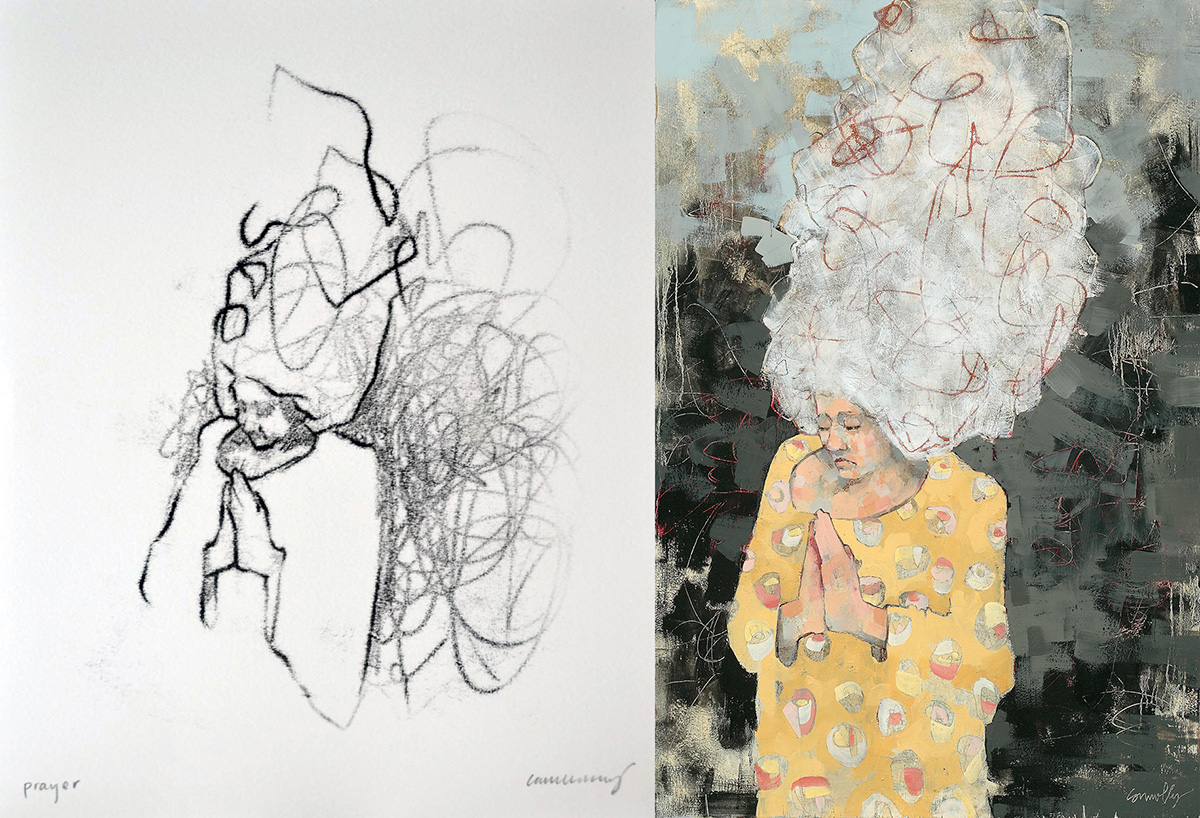
Where do you find your greatest motivation?
At the core of my being I believe I am a creator and I feel invigorated, satisfied, and happy when I am creating. That is my greatest motivation. I think I am also largely motivated by setting unrealistic goals for myself and striving to achieve them. My perception of “reality” is a little fuzzy around the edges and I think my head is often in the clouds. While this is a disservice in many functional “responsible adult” ways, I do believe it works in my favor when it comes to daydreaming and goal-setting.
Tell us more about these “unrealistic goals”. Will you share an example?
Oh, you know, to be in a demolition derby, to own a few miniature horses, and to share my art with the world.
Sounds like an awesome life. Have you considered a miniature horse demolition derby?
Brilliant! An idea definitely worth exploring and another opportunity to dust off the cowboy boots.

When it comes to sharing your art with the world, what message would you want to convey?
If I could, I would love to capture an emotion so purely that it would have to be shared with the world. I aspire to paint love so perfectly, or color sadness so deeply, or suggest spirituality so profoundly that a large body of people, despite our many differences, could stand in front of the same painting and feel wonderfully human and deeply united together.
What are you currently working on?
I am working on a lot of paintings, it’s fantastic! I have been working in large batches on two to three dozen paintings at the same time, here a little, there a little. Being able to mull over a large body of paintings during a long period of time allows me to really savor each painting.
I am always working on my sketchbook, but I can hardly say it’s work. My sketchbook is my play. It’s my free space where anything goes. It can be outrageous, weird, beautiful, painful. All doodles are loved inside my sketchbook. And I call them doodles on purpose. I used to feel anxiety about defiling a clean white page of a sketchbook with a “bad drawing.” It all felt so permanent and terrifying to me. So I started to call them “doodles” instead of sketches and adopted a new motto: “respect whatever comes out.” If I drew it, then it came from somewhere inside me and it’s insanely important.
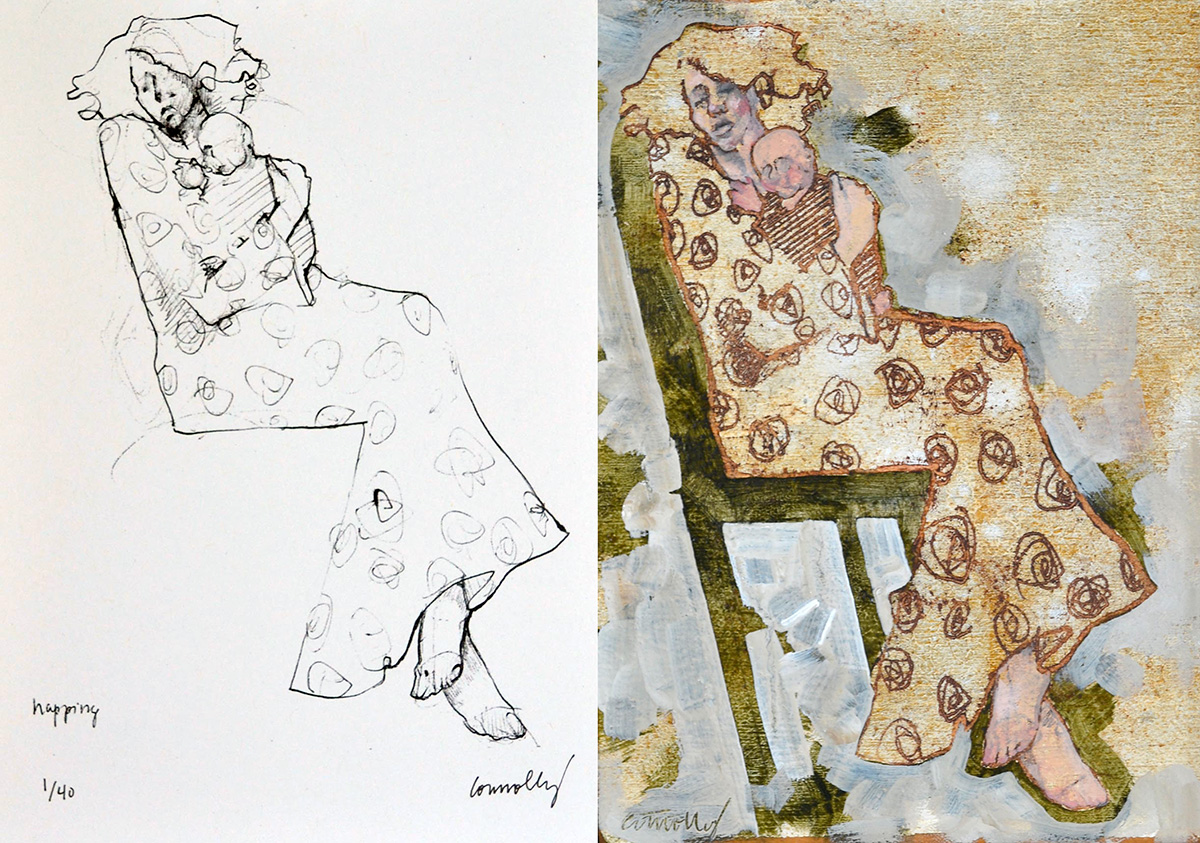
That’s quite a large collection of work you’re creating. Where will you be showing it? What are your goals for showing your work? Where is the ideal place for you to show it?
I’m just beginning to show my work at Meyer Gallery in Park City and Erickson Gallery in Salt Lake City, which is keeping me very busy. I have also been selling a lot of paintings out of my living room—it must be the astro-turf green shaded carpet that is so alluring to passers-by. Nothing makes me happier than to see one of my paintings go into another home where it is truly loved. I want to see this happen over and over again, no matter the venue it is sold at. ❧
